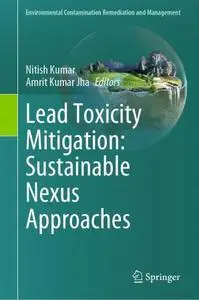Lead Toxicity Mitigation: Sustainable Nexus Approaches
by Nitish Kumar and Amrit Kumar Jha
English | 2024 | ISBN: 3031461452 | 337 Pages | True PDF | 8 MB
by Nitish Kumar and Amrit Kumar Jha
English | 2024 | ISBN: 3031461452 | 337 Pages | True PDF | 8 MB
This edited book brings together a diverse group of researchers to address the challenges posed by global mass poisoning caused by lead contamination of soil and plants. Lead is among the elements that have been most extensively used by man over time. This has led to extensive pollution of surface soils on the local scale, mainly associated with mining and smelting of the metal and addition of organic lead compounds to petrol. Release of lead to the atmosphere from various high-temperature processes has led to surface contamination on the regional and even global scale. Lead is particularly strongly bound to humic matter in organic-rich soil and to iron oxides in mineral soil and is rather immobile in the soil unless present at very high concentrations. In addition, plants grown on lead-rich soils incorporate lead and thus the concentration of lead in crop plants may be increased. Lead enters in the food chain through consumption of plant material. A high concentration of lead has been found to be harmful to vegetation. As the lead concentration increases, it adversely affects several biological parameters and eventually renders the soil barren. The book sheds light on this global environmental issue and proposes solutions to contamination through multi-disciplinary approaches.
This book contains three sections. First section describes the different sources and distribution of lead in soil and plant ecosystems. Second section explains the health risks linked to lead toxicity. Third section addresses sustainable lead toxicity mitigation strategies using the potential applications of recent biological technology.
This book is a valuable resource to students, academics, researchers, and environmental professionals doing field work on contamination throughout the world.



